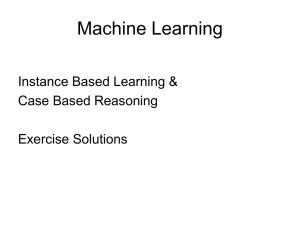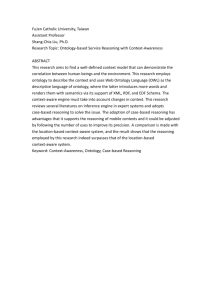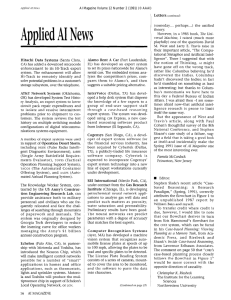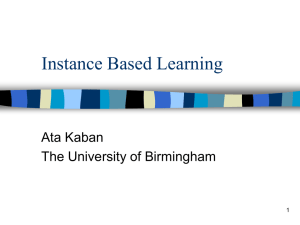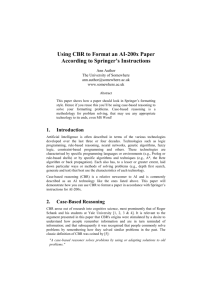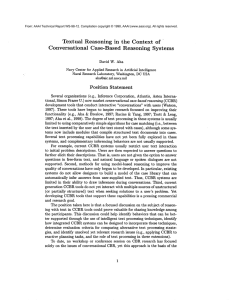WorkSheet
advertisement
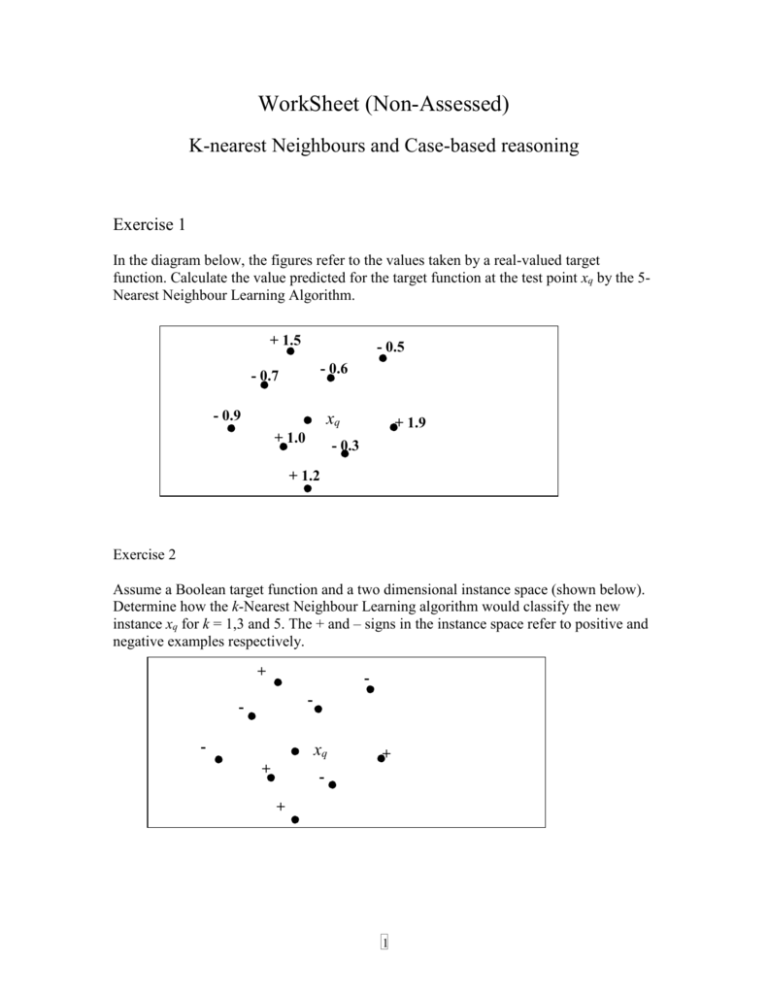
WorkSheet (Non-Assessed) K-nearest Neighbours and Case-based reasoning Exercise 1 In the diagram below, the figures refer to the values taken by a real-valued target function. Calculate the value predicted for the target function at the test point xq by the 5Nearest Neighbour Learning Algorithm. + 1.5 - 0.5 - 0.6 - 0.7 - 0.9 xq + 1.0 + 1.9 - 0.3 + 1.2 Exercise 2 Assume a Boolean target function and a two dimensional instance space (shown below). Determine how the k-Nearest Neighbour Learning algorithm would classify the new instance xq for k = 1,3 and 5. The + and – signs in the instance space refer to positive and negative examples respectively. + - - xq + + + 1 Exercise 3 (an example from past exams) (a) Some machine learning algorithms are described as eager, others as, lazy. Choose an example of each type of algorithm and explain in what sense one is eager and the other is lazy. (b) Describe the essential differences between k-nearest neighbour learning and Case- based reasoning. (c) Describe in words the R4 model of Case-based Reasoning (d) How do Case-based Reasoning systems learn? (e) Some researchers in the field of machine learning argue that Case-based reasoning is closer to human thinking than some other forms of machine learning. Give an real-world example that supports this view. Source of info: Lecture + handout. Additional source of info: Chapter on Instance Based Learning from Tom Mitchell’s book. 2
